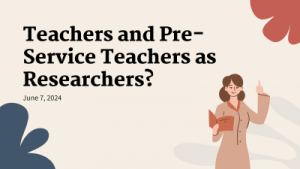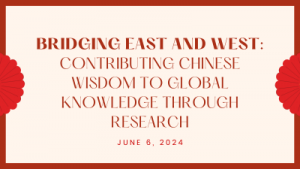Together with the release of the PISA 2022 results, Andreas Schleicher’s Insights and Interpretations executive summary announced the OECD would soon release a PISA Happy Life Dashboard: “The dashboard considers nine pivotal aspects to student well-being including engagement with the school, openness to diversity, psychological well-being, social relationships, and study-life balance.” (p.65). While this Dashboard is new, the gradual enlargement of PISA to add social and emotional dimension to its core cognitive tests has already been unfolding over the last 7-8 years. From ‘Happy Schools’ in PISA 2015, to Students’ Feelings in PISA 2018, to the new Happy Life Dashboard in PISA 2022, the OECD is clearly working hard to redefine itself away from the Human/Knowledge Capital focus it was founded upon. Much of this recent work has flown under the banner of the Well-Being 2030 agenda, and the PISA Happy Life Dashboard promises a new composite index to announce the OECD’s ‘lead’ in tracking non-cognitive educational ‘progress’ worldwide.
What are we, as educational researchers and practitioners, to make of this shift? Who can possibly be against ‘student happiness and well-being’? Isn’t the OECD’s new direction, a turn away from a myopic focus on GDP growth and cognitive measurement, to be applauded? Might we even read it as implicit recognition by the OECD of myriad scholarly critiques over the past decade? (e.g., The 2014 Guardian Open Letter, refutation of the GDP-test score linkages, the methodological flaws, the political perils, the ill-conceived extension to ‘developing’ countries, and so on).
In fact, a new wave of scholarly critique already gives us reason to be highly skeptical of the Dashboard, even without yet seeing the details. Production of ‘Happy Human Capital’ (Kim, 2023) is perhaps the real goal, a sentiment echoed by Robertson and Beech (2023) who argue that the very failure of neo-liberal ‘promises’ over the past three decades has led the OECD to reposition itself as purveyor of ‘happiness’: “it is capitalism that is transforming, and as a result, the ideational work of the OECD must follow along with the instruments of imagination that it uses to govern.” Other work highlights the on-going contradiction between the OECD’s ambition to measure the entire world, but doing so with ‘yardsticks’ developed solely from Western psychology and social science (Rappleye et al., 2020; Rappleye et al., 2024). More philosophically, Jackson (2021) calls into question the very politics of educating emotion, as seen in movements like Positive Psychology and Emotional Intelligence, challenging the core assumption that only positive states should be the focus: Isn’t there much to learn – about human being – from anger, sadness, fear and anxiety as well?
We can already see that the conflation of ‘happiness’ and ‘well-being’ in the announcement of the Dashboard (Schleicher, above) reveals a continued lack of precision in the OECD’s conceptualization. That is, the key term in this whole push – ‘well-being’ – includes the word ‘being’. ‘Being’ is far more expansive than ‘happiness’, a point the OECD still fails to understand it seems, as evidenced by the zig-zagging between ‘Happy Schools’ (PISA 2015) and ‘Happy Life’ (PISA 2022) measurements to ‘Students’ Well-Being’ (PISA 2015) and ‘Well-Being 2030’ (PISA 2018 – ongoing). Without first contemplating what ‘being’ means, how could one learn to ‘be well’? Without first having a sense of the great diversity of ways of ‘being’ worldwide, how could one possibly begin to conceptualize appropriate measurement(s) for the world?
In a new co-authored book with Yukiko Uchida, renowned cultural psychologist and member of Japan’s Central Council for Education, entitled An Interdependent Approach to Happiness and Well-Being (open access), we underscore that without such conceptual, psychological, and philosophical precision, ‘Happiness Rankings’ like the proposed PISA Happy Life Dashboard are simply unreflective ‘cultural products’ that reify particular (Western) cultural assumptions about a ‘happy life’. If the OECD is serious about capturing students’ happiness and well-being globally, it must first put in place consultative processes that allow these deeper differences – not deficits – in culture, philosophy, language, and learning to become visible. Once made visible, linkages between these diverse pathways to (well-)being and its links to education can be tentatively explored. We eagerly await the launch of the forthcoming Dashboard to see how much the process of producing PISA metrics itself has evolved, as opposed to simply papering over an old problem with a new language.
Jeremy Rappleye is Professor, Faculty of Education, University of Hong Kong. Recent books include An Interdependent Approach to Happiness and Well-Being (Palgrave, 2024, with Yukiko Uchida), Is Japanese Education Really That Bad? Using International Comparative Data to Rethink Common Assumptions (Chikuma Press, 2021, in Japanese, with Hikaru Komatsu), and Education, Equality, and Meritocracy in a Global Age: The Japanese Approach (Teachers College Press, 2020, with Takehiko Kariya).




I think the emotions like happiness, well-being, sense of belonging are universal.
ISA (Programme for International Student Assessment) primarily focuses on assessing 15-year-old students’ academic abilities in reading, mathematics, and science. While it doesn’t directly measure children’s well-being, it does provide some insights indirectly.
Firstly, PISA often includes questions related to students’ attitudes towards school, their sense of belonging, and their satisfaction with life. These indicators can offer some insights into students’ overall well-being. For example, if students report high levels of satisfaction with life and a strong sense of belonging at school, it may suggest a positive overall well-being.
Secondly, research studies have used PISA data to explore the relationship between academic performance and well-being. There’s evidence to suggest that students who perform well academically tend to report higher levels of well-being. However, it’s essential to note that this relationship is complex and influenced by various factors, including socio-economic background, cultural differences, and individual characteristics.
Overall, while PISA doesn’t provide a comprehensive picture of children’s well-being, it does offer valuable insights into certain aspects, such as their attitudes towards school and life satisfaction, which can contribute to understanding their overall well-being.